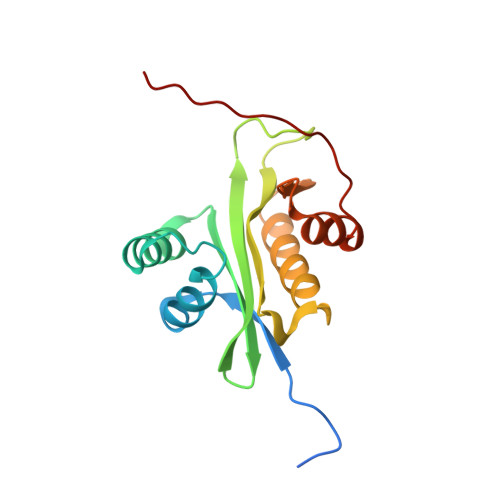A bacterial acetyltransferase capable of regioselective N-acetylation of antibiotics and histones
Vetting, M.W., Magnet, S., Nieves, E., Roderick, S.L., Blanchard, J.S.(2004) Chem Biol 11: 565-573
- PubMed: 15123251
- DOI: https://doi.org/10.1016/j.chembiol.2004.03.017
- Primary Citation of Related Structures:
1S3Z, 1S5K, 1S60 - PubMed Abstract:
The Salmonella enterica chromosomally encoded AAC(6')-Iy has been shown to confer broad aminoglycoside resistance in strains in which the structural gene is expressed. The three-dimensional structures reported place the enzyme in the large Gcn5-related N-acetyltransferase (GNAT) superfamily. The structure of the CoA-ribostamycin ternary complex allows us to propose a chemical mechanism for the reaction, and comparison with the Mycobacterium tuberculosis AAC(2')-CoA-ribostamycin complex allows us to define how regioselectivity of acetylation is achieved. The AAC(6')-Iy dimer is most structurally similar to the Saccharomyces cerevisiae Hpa2-encoded histone acetyltransferase. We demonstrate that AAC(6')-Iy catalyzes both acetyl-CoA-dependent self-alpha-N-acetylation and acetylation of eukaryotic histone proteins and the human histone H3 N-terminal peptide. These structural and catalytic similarities lead us to propose that chromosomally encoded bacterial acetyltransferases, including those functionally identified as aminoglycoside acetyltransferases, are the evolutionary progenitors of the eukaryotic histone acetyltransferases.
Organizational Affiliation:
Department of Biochemistry, Albert Einstein College of Medicine, 1300 Morris Park Avenue, Bronx, NY 10461 USA.
















